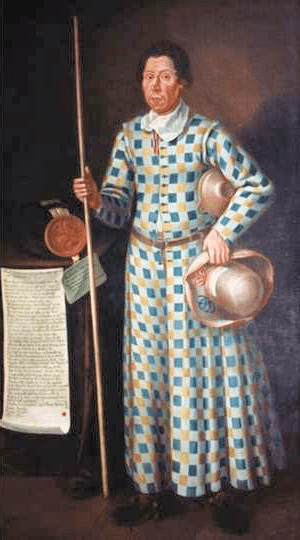Tomfoolery
Q From Joe Brown: I was wondering where the phrase Tom Foolery came from?
A I would write it as one word, tomfoolery, and my ordered ranks of dictionaries tell me I’m right. But it often turns up in print in the way you have written it, or as Tom foolery or tom-foolery or Tom-foolery. Such forms show that their writers still link the word with some fool called Tom, even though they may not know who he was.

A portrait of Tom Skelton.
It is sometimes claimed that the original Tom Fool was Thomas Skelton. He was a jester, a fool, for the Pennington family at Muncaster Castle in Cumbria. This was probably about 1600 — he is said to be the model for the jester in Shakespeare’s King Lear of 1606. In legend, he was an unpleasant person. One story tells how he liked to sit under a tree by the road; whenever travellers he didn’t like asked the way to the ford over the River Esk, he would instead direct them to their deaths in the marshes. Another tale links him with the murder of a carpenter who was the lover of Sir William Pennington’s daughter.
So much for stories. In truth, Tom Fool is centuries older. He starts appearing in the historical record early in the 1300s in the Latinate form Thomas fatuus. The first part served even then as a generic term for any ordinary person, as it still does in phrases like Tom, Dick or Harry. The second word means stupid or foolish in Latin and has bequeathed us fatuous and infatuate, among other words. By 1356 Thomas fatuus had become Tom Fool.
Around the seventeenth century, the character of Tom Fool shifted somewhat from the epitome of a stupid or half-witted person to that of a fool or buffoon. He became a character who accompanied morris-dancers or formed part of the cast of various British mummers’ plays performed at Christmas, Easter or All Souls’ Day.
A tom-fool was more emphatically foolish than an unadorned fool. Tomfoolery was similarly worse than foolery, the state of acting foolishly, which had been in English since the sixteenth century. Perhaps oddly, it took until about 1800 for tomfoolery to appear. It had been preceded by the verb to tom-fool, to play the fool.
